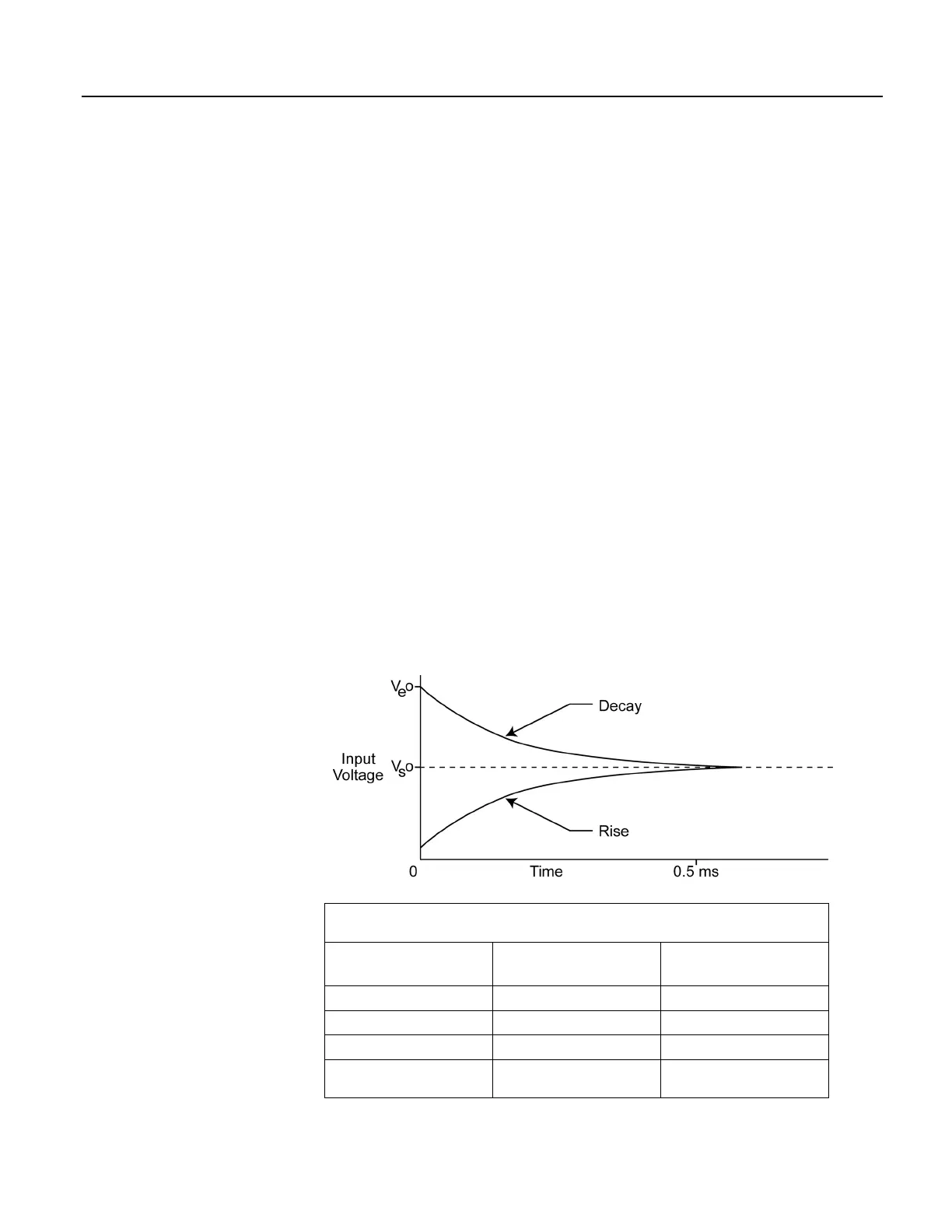• A relatively large transient induced by an adjacent excitation conductor on
the signal conductor, if present,because of capacitive coupling during a
bridge measurement
• Dielectric absorption. 50 Hz or 60 Hz integrations require a relatively long
reset time of the internal integration capacitor before the next measurement.
The rate at which the signal settles is determined by the input settling-time
constant, which is a function of both the source resistance and fixed-input
capacitance (3.3 nfd) of the CR1000.
Rise and decay waveforms are exponential. Figure Input Voltage Rise and
Transient Decay
(p. 318) shows rising and decaying waveforms settling closer to the
true signal magnitude, V
so
. The SettlingTime parameter of an analog
measurement instruction allows tailoring of measurement instruction settling
times with 100 µs resolution up to 50000 µs.
Programmed settling time is a function of arguments placed in the SettlingTime
and Integ parameters of a measurement instruction. Argument combinations and
resulting settling times are listed in table CRBasic Measurement Settling Times
(p.
318).
Default settling times (those resulting when SettlingTime = 0) provide
sufficient settling in most cases. Additional settling time is often programmed
when measuring high-resistance (high-impedance) sensors or when sensors
connect to the input terminals by long leads.
Measurement time of a given instruction increases with increasing settling time.
For example, a 1 ms increase in settling time for a bridge instruction with input
reversal and excitation reversal results in a 4 ms increase in time for the CR1000
to perform the instruction.
Figure 84. Input-voltage rise and transient decay
Table 62. CRBasic Measurement Settling Times
SettlingTime
Argument
Integ
Argument
Resultant
Settling Time
1
0 250
450 µs
0 _50Hz
3 ms
0 _60Hz
3 ms
integer ≥ 100 integer
μs entered in SettlingTime
argument
318

